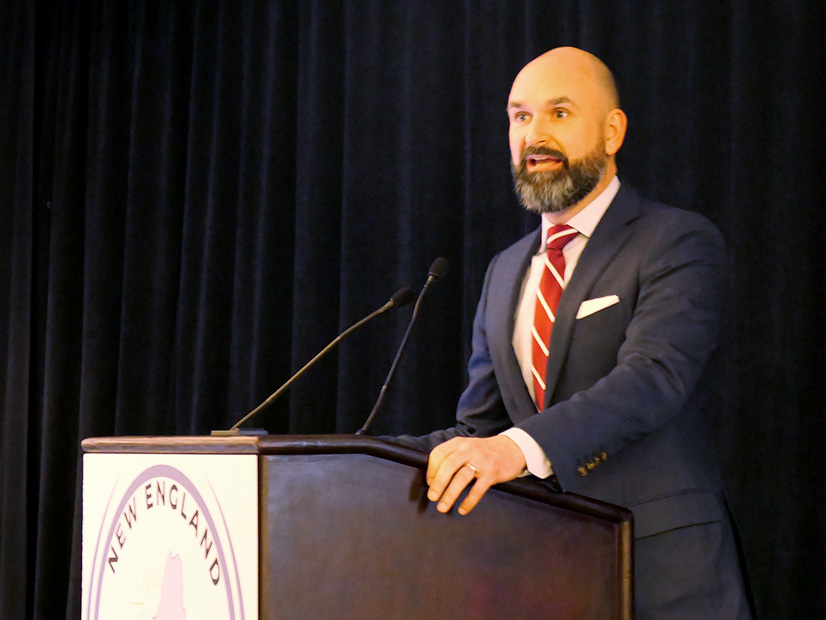The power industry’s own demand forecasts expect national summer peak to swell by 166 GW by 2030, which would be the equivalent of adding 15 times the peak load of New York City, Grid Strategies said in its latest load growth report.
The estimates, which are based on reports submitted to FERC through Form 714, include 90 GW of new data centers, 30 GW of industrial growth, 10 GW from oil and gas and mining, and 30 GW from other sources. This is the third report in a row published by Grid Strategies showing demand growth, and the pace has grown each time, the firm’s president, Rob Gramlich, said during a webinar hosted by Americans for a Clean Energy Grid on Dec. 4.
“We’re talking about over 5% annual growth, which is pretty extraordinary,” Gramlich said. “Now it’s not, by historical standards, a growth rate that is unprecedented.”
It certainly is in total gigawatts, however, as the last time the electric industry saw growth at similar levels in the middle of the 20th century, it was from a smaller base, he noted.
“We’ve been able to meet the pace of growth in the past,” Gramlich said. “But of course, we’ve, in a way, as an industry and a regulatory community, lost our muscle memory on a lot of these things. It’s just not something that most of us in our careers have had to deal with.”
Energy use is growing even faster than the peak numbers, at 50% over the next half decade, which means the new demand has a higher load factor, he added. The bulk power system in the U.S. averages a 60% load factor today, but that is expected to reach 66% by 2030 as new demand comes online, the report says.
“Data centers generally operate at an above-average load factor,” the report said. “For example, Dominion Virginia reported an 82% load factor for large data centers in 2024, and Duke Energy states that it plans for new large loads to have an 80% load factor. It appears that some large load forecasts may use higher values, perhaps as high as 100%, which is unrealistic.”
The utility reports to FERC are likely overstating the amount of data center load, with an estimate from Cleanview showing just 60 GW by 2029, and TD Cowen predicting 65 GW by 2030 based on orders for advanced microchips.
“Somewhat similar to what we have on the generation side, there are always way more proposed projects than there are actual projects that go forward,” Gramlich said. “I never liked the term ‘speculative’ about generation. I don’t really like it about load either. It’s just how the business works. If you’re building anything, you have to not put all your eggs in one site basket.”
All the new load being projected means that the industry and regulators are going to need to expand the BPS, Virginia State Corporation Commission Judge Kelsey Bagot said on the webinar.
“We’re certainly going to have to build a lot of generation right, which necessarily includes the transmission component,” she added.
Generally, the industry has been reactive but meeting the needs of these new customers while keeping costs affordable will require it to be more proactive in its planning, Bagot said. The cost of the expansion naturally leads to questions about allocation, which can lead to litigation at the state level and goes to the core of concerns that existing ratepayers have about affordability.
“In order to be comfortable proactively building, I think we need to pay attention to cost allocation, and at the state level, that means making sure that we are allocating transmission build to the folks that are driving the need for the build, right?” Bagot said. “That will get the end-use customer more comfortable with the amount of transmission that we’re building.”
Getting the expansion done affordably means using all the tools available, including advanced transmission technologies, distributed energy resources and virtual power plants, said Sarah Freeman, a principal at the Regulatory Assistance Project.
“It’s so critical that we encourage/force our utilities to take these bigger picture looks,” Freeman said.
Amazon Web Services Energy Policy Manager Ray Fakhoury agreed that the industry needs to proactively plan to meet new loads more than it has recently, and he said the new technologies his company and others are working on — those that are driving the growth — can help.
“There is a way to integrate artificial intelligence, machine learning [and] the highest standards of all of these software programming so that we can identify the optimal spots to build out transmission,” he argued.
